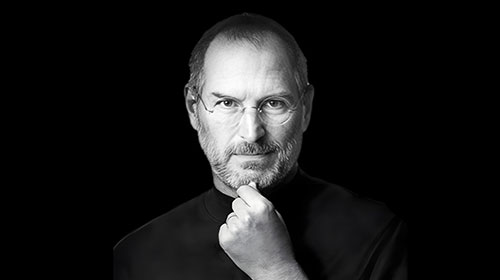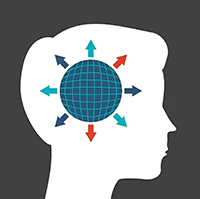内容不断更新,建议购买会员永久查看
许多人认为,科学研究和技术进步主要依赖于运气或者有明确目标的研究。但本文作者指出,技术进步的真正动力在于回报的不对称性,也就是我们所说的“凸性”或“反脆弱性”,即在某些情况下,收益远远超过潜在的损失。这种理解有助于我们重新审视科学发现的过程。
以医学领域为例,首批抗菌药物的发现是在对各种化学染料进行了成百上千次的系统性试验后偶然发现的,并不是完全出于目标明确的研究。再比如,从轮子的发明到它被用在行李箱上,这中间至少跨越了五千年。
以下是一些关键观点,它们进一步阐释了如何利用凸性或反脆弱性来指导我们的研究和实践:
• 降低每次试验的成本:通过降低每次试验的成本,我们可以增加凸性,从而增加从不确定性中获益的可能性。
• “1/N”策略:通过将投资分散到多个项目中,我们可以最小化错失机会的概率。
• 序列可选性:保持计划的灵活性,以便根据机会变化进行调整。
• 简单的力量:最简单的技术往往被忽视,但在实际操作中,复杂化并不总是带来额外的好处。从轮子的发明到把轮子用在行李箱上,这中间至少跨越了五千年。有时候,最简单的技术反而被我们忽视。
• 重视负面结果的记录:通过排除法来缩小行动范围。
正文:
一、理解是凸性(反脆弱性)的拙劣替代品
在回顾科学和技术发现的历史时,我们遗漏了一个非常关键的点。讨论和争议往往围绕着运气的作用,以及目标导向型研究的作用上。
这种辩论其实是个伪命题:运气怎能指导正式的研究政策呢?我们无法系统化、形式化和规划随机性。真正的驱动力既不是运气,也不是目标,而是回报的不对称性(或凸性),这是一个简单的数学特性,却一直被忽视,而理解它可以帮助我们制定精确的研究原则和方案。
二、被忽视的不对称性
运气与知识的较量是这样的。讽刺的是,即使排除了那些夸大其词的部分,我们对于由运气导致的成果的证据,仍然远远多于那些归因于有目的性的成果(物理学除外)。
在医学或工程学这样一些复杂且非线性的领域里,有目的性的例外情况并不多见,比如少数设计药物。这让我们陷入了一个矛盾:
我们很大程度上是靠无目的的偶然性走到今天,但我们却基于有目的性和故事性来规划未来的研究。更糟糕的是,我们对此矛盾心知肚明。
我们这里要阐述的论点是,逻辑上讲,无论是试错法还是“偶然”和意外发现,都不可能是技术和实证科学进步的真正原因。按定义来说,偶然性不可能带来长期的收益(否则它就不再是偶然);试错法也不可能总是有效的:错误会导致飞机坠毁、建筑倒塌,知识退步。
收益得从我们面对的情况类型中来,也就是收益函数,而不是靠“运气”:收益(得大)和失误(小或者无伤大雅)之间得有明显差别,正是这种差别让运气和试错能奏效。
这种差别的数学说法就是“凸性”(图 1 有解释);那些收益大过损失的函数,属于非线性凸函数,跟金融期权挺像的。重要的是,凸型收益能从不确定和混乱中得到好处。收益函数的非线性,也就是凸性,让我们能制定出既合理又严格的研究策略,而且这些策略能让我们从随机性中获益。
![图片[1]—【H135】理解是反脆弱性的不良替代品—求知行囊阅览室](https://www.caozhe.cn/wp-content/uploads/2025/02/bcb3f586-322a-492b-9724-ca612516703a.jpg)
图 1 – 随机事件带来的收益大于损失。曲线向外凸起,看起来是“凸”形。任何地方如果有这样的不对称性,我们称之为凸形;如果不是,那就是凹形。凸形意味着,错误(或变化)对你的伤害远不如你从中获得的收益大,从长远来看,你会欢迎不确定性。
三、复杂系统与选择权
在那些我们对因果链条几乎一无所知的复杂系统中,修补、拼凑或类似的试错方法已经被证明远远优于目标导向的方法——这正是自然界的行事风格。
但这种修补必须得是凸性的;这是至关重要的。就拿最难以捉摸的烹饪来说,它完全建立在试错的经验法则之上,因为我们无法直接从化学方程式中设计出一道菜,也无法从营养标签中反向推导出味道。
比如,我们拿鹰嘴豆泥,加点调料,比如香料,尝尝看这复杂的相互作用是否让味道有所提升,如果喜欢这个新味道就保留,不喜欢就放弃。关键是我们有选择保留的自由,而不是被迫接受结果,这样我们就能保持最佳状态,不受不利结果的影响。
这种“选择权”是研究结果呈现凸性的秘密。期权给了持有者一个优势:他们能从结果中挑出最有利的,忽略掉不利的(他们有选择的自由,而不是被迫接受)。
所以,我们可以把这种选择权的概念应用到研究项目上——这个想法是塔勒布以自己作为期权交易员的大部分成年生活经验为基础的。
如果我们用这种视角来解读弗朗索瓦·雅各布的观点,进化就像是压力和错误的凸函数——基因突变本身并不花钱,而且当它们带来好处时才会被保留。
社会中的那些根深蒂固的启发式规则和经验法则也是这样形成的;它们就像食谱一样,是通过不断提炼“有效方法”的精华而形成的。但与自然界不同,人类不是通过生存竞争自动做出选择,而是需要通过理性的选择来提升到更好的状态——遗憾的是,人类有心理偏见和文化障碍,这是自然界所没有的。
选择权使我们摆脱了方向、预测、计划和叙事的束缚。(用信息论的比喻来说,如果你要去一个为你提供更多选择的度假胜地,你可以通过提前问更少的问题来预测你的活动。)
虽然找到一个更好的鹰嘴豆泥食谱不会颠覆世界,但有些发现却能带来惊人的好处;比如青霉素、化疗、潜在的清洁技术,以及类似的重大影响事件(“黑天鹅”)。首批抗菌药物的发现,是在 20 世纪 20 年代,像多马克这样的科学家进行了数百次系统性(凸性)试验后的结果,他们的研究计划主要是尝试各种染料,而对背后的生物学过程知之甚少。这与明确的金融期权不同,金融期权中买方需向卖方支付费用,因此交易方式旨在防止过度获利,而研究的成果并不是零和游戏。
四、事物偏爱不确定性
我们能够设计出一套研究资金和投资策略,这得益于一系列数学原理。这些原理自 18 世纪起就被人们凭经验所知,到了 1900 年左右(随着约翰·延森和路易·巴舍利耶的研究结果)被明确地阐述出来。
这些原理揭示了从凸性中获益的必然性,以及不确定性带来的非直观好处。我们把“凸性偏差”定义为两种试错结果的差异:一种是收益和损失平衡(线性)的情况,另一种是收益和损失不对称(再次强调,即凸性收益函数)的情况。这些核心且有用的性质包括:a) 收益函数越凸,即潜在收益与损失的差异越大,偏差就越大。b) 环境越动荡,偏差也越大。但人们往往因为厌恶不确定性,而忽视了这一点。
塔勒布给这个概念起了个名字,叫“反脆弱性”(因为实在想不出更好的),指的是那些偏爱凸性、能从“混乱集群”中获益的现象,比如波动性、不确定性、干扰、随机性和压力。反脆弱和脆弱正好相反,脆弱的东西讨厌混乱。就像咖啡杯,它喜欢安静和平稳,而反脆弱则喜欢动荡:波动越大,它越受益。
这种从不确定性中获益的特性,在复杂系统中更倾向于选择权而非目的性,因为目的性在不确定性增加时会受到损害。举个例子,如果你把不确定性和错误带入飞机飞行(脆弱或凹性情况),结果会更糟,因为错误会导致延误和成本上升,甚至可能坠机。银行投资组合和脆弱的结构也是如此。
但如果你把不确定性带入凸性领域,比如某些研究,结果会改善,因为不确定性增加了收益的可能,而不会放大损失。 这一差异帮我们指明了方向。与偶然性不同,凸性偏差可以被明确定义、正式化、识别,甚至在某些情况下可以被科学地测量。它还能引导我们制定在不确定性下的正式决策政策,并根据策略的事前预测效率和预期成功率来进行分类。接下来,我们将用接下来的 7 条规则来具体实践这一点。
![图片[2]—【H135】理解是反脆弱性的不良替代品—求知行囊阅览室](https://www.caozhe.cn/wp-content/uploads/2025/02/fa339acd-05da-4f14-bcb7-a48741b51137.png)
图 2 – 反脆弱性优势(凸性偏好)。一个随机模拟显示了以下三者之间的差异:a)具有凸性试错的过程(反脆弱);b)纯粹的知识过程,没有凸性试错(基于知识);c)非凸性试错过程,其中错误造成的损害和收益相等(纯粹的机会)。我们可以看到,在某些领域,理性和凸性试错的效果远远胜过纯粹知识。
四、研究中的七条反脆弱(凸性)法则
接下来,我会详细阐述这些法则。括号里的专业术语,将这些理念与期权理论相联系。
1.凸性比知识更容易获得(行话里叫“长伽马”特性)
就像我们在图 2 看到的,在一定程度的不确定性下,我们通过改善收益函数获得的好处,比了解我们到底在找什么要多。通过降低每次试验的成本(以改善最坏情况),可以增加凸性。
2.对于凸性策略,“1/N”策略几乎总是最佳选择(分散性特性)
根据第 1 点,降低每次尝试的成本后,我们可以通过增加试验次数来补偿,将潜在投资的 1/N 分配给 N 个投资,并且尽量让 N 变大。这样做可以让我们最小化错失机会的概率,而不是最大化单次获胜的利润,因为后者的策略会降低获胜的概率。对单一试验的大规模投资,其预期回报低于一系列小规模试验的投资组合。
再进一步说,研究的回报呈现出“肥尾”效应,分布的“尾部”结果决定了整体特征;大部分收益来自于那些罕见事件,也就是所谓的“黑天鹅”事件:1000 次试验中的 1次可能贡献总收益的 50%——类似于公司规模(50%的市值通常来自 1000 家公司中的 1家)、畅销书(想想《哈利·波特》)或财富。而且,关键是我们事先并不知道谁会是最后的赢家。
![图片[3]—【H135】理解是反脆弱性的不良替代品—求知行囊阅览室](https://www.caozhe.cn/wp-content/uploads/2025/02/0fdbfe53-cdf8-4950-a695-bb7d9abe62b4.png)
图 3 – 肥尾效应:小概率事件的大影响:这条横线可以代表随时间变化的收益,或者多个同时进行的试验的横向比较。
3.序列可选性(棘轮效应)
一个死板的商业计划会让人陷入预设的固定政策,就像一条没有出口的高速公路——因此失去了灵活性。我们需要能够根据机会变化,并通过逐步提升来“重置”选项,锁定在更高的状态。用大白话来说,计划应该:1)保持灵活性,有多种退出策略;2)反直觉地,计划应该非常短期,以便更好地把握长远。从数学角度来看,连续五个一年的计划,远比一个五年的计划价值大得多。
这就解释了为什么战略规划这类事情在实际应用中从未成功:规划会限制我们的选择空间。这也说明了为什么自上而下的集中决策往往会失败。
4.非叙事性研究(选择权特性)
在加州,那些“捕捉黑天鹅”的技术专家更倾向于投资于能够灵活应对和逐步提升的代理人,而不是那些纸上谈兵的计划和叙事——通常人们会尝试六七个技术项目才找到正确的方向。注意,与凸性(收益的非线性增长)相比,“战略规划”显得力不从心。
- 理论往往是从(凸性)实践中孕育出来的,而不是反过来(非目的论特性)
教科书总是告诉我们,技术是科学的产物,但实际上往往恰恰相反,这种现象被形象地称为“教鸟儿怎么飞”效应。在工业革命等发展中(尤其是在物理学之外的非线性领域),与业余爱好者的摸索相比,基础研究的贡献几乎没有什么历史证据。图 2 从技术角度更清晰地展示了,在由“技能”和“运气”以及一定程度的不透明性定义的随机过程中,反脆弱性——也就是凸性偏差——如何显著超越“技能”。而在技术发展史中,凸性常常被忽视,取而代之的是事后的解释。
- 简单的力量(少即是多)
从轮子的发明到把轮子用在行李箱上,这中间至少跨越了五千年。有时候,最简单的技术反而被我们忽视。在实际操作中,复杂化并不会带来额外的好处;但在学术界,情况却恰恰相反。追求合理的解释、故事和理论,往往会让我们陷入复杂。在一个不透明的操作中,要提前弄清楚需要哪些知识来掌控局面,这几乎是不可能的。
- 重视负面结果的记录(排除法的特性)
选择性是通过负面信息来发挥作用的,通过知道哪些行不通,来缩小我们的行动范围。为此,我们需要为那些负面结果买单。
在过去二十年,对这些观点持批评态度的人一直在反驳,说这事儿跟买“彩票”差不多。彩票价格贵得离谱,体现了经济学家口中的“长赔率偏见”,就是说,人们愿意为小概率事件掏更多的钱。但这个比喻,其实站不住脚。因为长赔率偏见只适用于人为制造的情境:彩票是人为设计和销售的纯粹随机事件,而且有明确的上限。
塔勒布把这种现象叫做“游戏谬误”。研究的回报潜力巨大,而且没有上限——可以说是“免费期权”。我们有证据(来自银行的表现)显示,在现实世界里,押注小概率事件并不划算,这使得研究成为一种反向银行业务。
中英文翻译
UNDERSTANDING IS A POOR SUBSTITUTE FOR CONVEXITY (ANTIFRAGILITY)
理解是凸性(反脆弱性)的拙劣替代品
Something central, very central, is missing in historical accounts of scientific and technological discovery. The discourse and controversies focus on the role of luck as opposed to teleological programs (from telos, “aim”), that is, ones that rely on pre-set direction from formal science. This is a faux-debate: luck cannot lead to formal research policies; one cannot systematize, formalize, and program randomness. The driver is neither luck nor direction, but must be in the asymmetry (or convexity) of payoffs, a simple mathematical property that has lied hidden from the discourse, and the understanding of which can lead to precise research principles and protocols.
在回顾科学和技术发现的历史时,我们遗漏了一个非常关键的点。讨论和争议往往围绕着运气的作用,以及与目标导向型(源自希腊词“telos”,意为“目标”)研究的作用上。这种辩论其实是个伪命题:运气怎能指导正式的研究政策呢?我们无法系统化、形式化和规划随机性。真正的驱动力既不是运气,也不是目标,而是回报的不对称性(或凸性),这是一个简单的数学特性,却一直被忽视,而理解它可以帮助我们制定精确的研究原则和方案。
MISSING THE ASYMMETRY
被忽视的不对称性
The luck versus knowledge story is as follows. Ironically, we have vastly more evidence for results linked to luck than to those coming from the teleological, outside physics—even after discounting for the sensationalism. In some opaque and nonlinear fields, like medicine or engineering, the teleological exceptions are in the minority, such as a small number of designer drugs. This makes us live in the contradiction that we largely got here to where we are thanks to undirected chance, but we build research programs going forward based on direction and narratives. And, what is worse, we are fully conscious of the inconsistency.
运气与知识的较量是这样的。讽刺的是,即使排除了那些夸大其词的部分,我们对于由运气导致的成果的证据,仍然远远多于那些归因于有目的性的成果(物理学除外)。在医学或工程学这样一些复杂且非线性的领域里,有目的性的例外情况并不多见,比如少数设计药物。这让我们陷入了一个矛盾:我们很大程度上是靠无目的的偶然性走到今天,但我们却基于有目的性和故事性来规划未来的研究。更糟糕的是,我们对此矛盾心知肚明。
The point we will be making here is that logically, neither trial and error nor “chance” and serendipity can be behind the gains in technology and empirical science attributed to them. By definition chance cannot lead to long term gains (it would no longer be chance); trial and error cannot be unconditionally effective: errors cause planes to crash, buildings to collapse, and knowledge to regress.
我们这里要阐述的论点是,逻辑上讲,无论是试错法还是“偶然”和意外发现,都不可能是技术和实证科学进步的真正原因。按定义来说,偶然性不可能带来长期的收益(否则它就不再是偶然);试错法也不可能总是有效的:错误会导致飞机坠毁、建筑倒塌,知识退步。
The beneficial properties have to reside in the type of exposure, that is, the payoff function and not in the “luck” part: there needs to be a significant asymmetry between the gains (as they need to be large) and the errors (small or harmless), and it is from such asymmetry that luck and trial and error can produce results. The general mathematical property of this asymmetry is convexity (which is explained in Figure 1); functions with larger gains than losses are nonlinear-convex and resemble financial options. Critically, convex payoffs benefit from uncertainty and disorder. The nonlinear properties of the payoff function, that is, convexity, allow us to formulate rational and rigorous research policies, and ones that allow the harvesting of randomness.
收益得从我们面对的情况类型中来,也就是收益函数,而不是靠“运气”:收益(得大)和失误(小或者无伤大雅)之间得有明显差别,正是这种差别让运气和试错能奏效。这种差别的数学说法就是“凸性”(图 1 有解释);那些收益大过损失的函数,属于非线性凸函数,跟金融期权挺像的。重要的是,凸型收益能从不确定和混乱中得到好处。收益函数的非线性,也就是凸性,让我们能制定出既合理又严格的研究策略,而且这些策略能让我们从随机性中获益。
Figure 1- More Gain than Pain from a Random Event. The performance curves outward, hence looks “convex”. Anywhere where such asymmetry prevails, we can call it convex, otherwise we are in a concave position. The implication is that you are harmed much less by an error (or a variation) than you can benefit from it, you would welcome uncertainty in the long run.
图 1(如上所示) – 随机事件带来的收益大于损失。曲线向外凸起,看起来是“凸”形。任何地方如果有这样的不对称性,我们称之为凸形;如果不是,那就是凹形。凸形意味着,错误(或变化)对你的伤害远不如你从中获得的收益大,从长远来看,你会欢迎不确定性。
OPAQUE SYSTEMS AND OPTIONALITY
复杂系统与选择权
Further, it is in complex systems, ones in which we have little visibility of the chains of cause-consequences, that tinkering, bricolage, or similar variations of trial and error have been shown to vastly outperform the teleological—it is nature’s modus operandi. But tinkering needs to be convex; it is imperative. Take the most opaque of all, cooking, which relies entirely on the heuristics of trial and error, as it has not been possible for us to design a dish directly from chemical equations or reverse-engineer a taste from nutritional labels. We take hummus, add an ingredient, say a spice, taste to see if there is an improvement from the complex interaction, and retain if we like the addition or discard the rest. Critically we have the option, not the obligation to keep the result, which allows us to retain the upper bound and be unaffected by adverse outcomes.
在那些我们对因果链条几乎一无所知的复杂系统中,修补、拼凑或类似的试错方法已经被证明远远优于目标导向的方法——这正是自然界的行事风格。但这种修补必须得是凸性的;这是至关重要的。就拿最难以捉摸的烹饪来说,它完全建立在试错的经验法则之上,因为我们无法直接从化学方程式中设计出一道菜,也无法从营养标签中反向推导出味道。比如,我们拿鹰嘴豆泥,加点调料,比如香料,尝尝看这复杂的相互作用是否让味道有所提升,如果喜欢这个新味道就保留,不喜欢就放弃。关键是我们有选择保留的自由,而不是被迫接受结果,这样我们就能保持最佳状态,不受不利结果的影响。
This “optionality” is what is behind the convexity of research outcomes. An option allows its user to get more upside than downside as he can select among the results what fits him and forget about the rest (he has the option, not the obligation). Hence our understanding of optionality can be extended to research programs — this discussion is motivated by the fact that the author spent most of his adult life as an option trader. If we translate François Jacob’s idea into these terms, evolution is a convex function of stressors and errors —genetic mutations come at no cost and are retained only if they are an improvement. So are the ancestral heuristics and rules of thumbs embedded in society; formed like recipes by continuously taking the upper-bound of “what works”. But unlike nature where choices are made in an automatic way via survival, human optionality requires the exercise of rational choice to ratchet up to something better than what precedes it —and, alas, humans have mental biases and cultural hindrances that nature doesn’t have. Optionality frees us from the straightjacket of direction, predictions, plans, and narratives. (To use a metaphor from information theory, if you are going to a vacation resort offering you more options, you can predict your activities by asking a smaller number of questions ahead of time.)
这种“选择权”是研究结果呈现凸性的秘密。期权给了持有者一个优势:他们能从结果中挑出最有利的,忽略掉不利的(他们有选择的自由,而不是被迫接受)。所以,我们可以把这种选择权的概念应用到研究项目上——这个想法是作者以自己作为期权交易员的大部分成年生活经验为基础的。如果我们用这种视角来解读弗朗索瓦·雅各布的观点,进化就像是压力和错误的凸函数——基因突变本身并不花钱,而且当它们带来好处时才会被保留。社会中的那些根深蒂固的启发式规则和经验法则也是这样形成的;它们就像食谱一样,是通过不断提炼“有效方法”的精华而形成的。但与自然界不同,人类不是通过生存竞争自动做出选择,而是需要通过理性的选择来提升到更好的状态——遗憾的是,人类有心理偏见和文化障碍,这是自然界所没有的。选择权使我们摆脱了方向、预测、计划和叙事的束缚。(用信息论的比喻来说,如果你要去一个为你提供更多选择的度假胜地,你可以通过提前问更少的问题来预测你的活动。)
While getting a better recipe for hummus will not change the world, some results offer abnormally large benefits from discovery; consider penicillin or chemotherapy or potential clean technologies and similar high impact events (“Black Swans”). The discovery of the first antimicrobial drugs came at the heel of hundreds of systematic (convex) trials in the 1920s by such people as Domagk whose research program consisted in trying out dyes without much understanding of the biological process behind the results. And unlike an explicit financial option for which the buyer pays a fee to a seller, hence tend to trade in a way to prevent undue profits, benefits from research are not zero-sum.
虽然找到一个更好的鹰嘴豆泥食谱不会颠覆世界,但有些发现却能带来惊人的好处;比如青霉素、化疗、潜在的清洁技术,以及类似的重大影响事件(“黑天鹅”)。首批抗菌药物的发现,是在 20 世纪 20 年代,像多马克这样的科学家进行了数百次系统性(凸性)试验后的结果,他们的研究计划主要是尝试各种化学染料,而对背后的生物学过程知之甚少。这与明确的金融期权不同,金融期权中买方需向卖方支付费用,因此交易方式旨在防止过度获利,而研究的成果并不是零和游戏。
THINGS LOVE UNCERTAINTY
事物偏爱不确定性
What allows us to map a research funding and investment methodology is a collection of mathematical properties that we have known heuristically since at least the 1700s and explicitly since around 1900 (with the results of Johan Jensen and Louis Bachelier). These properties identify the inevitability of gains from convexity and the counterintuitive benefit of uncertainty ii iii. Let us call the “convexity bias” the difference between the results of trial and error in which gains and harm are equal (linear), and one in which gains and harm are asymmetric ( to repeat, a convex payoff function). The central and useful properties are that a) The more convex the payoff function, expressed in difference between potential benefits and harm, the larger the bias. b) The more volatile the environment, the larger the bias. This last property is missed as humans have a propensity to hate uncertainty.
我们能够设计出一套研究资金和投资策略,这得益于一系列数学原理。这些原理自 18 世纪起就被人们凭经验所知,到了 1900 年左右(随着约翰·延森和路易·巴舍利耶的研究结果)被明确地阐述出来。这些原理揭示了从凸性中获益的必然性,以及不确定性带来的非直观好处。我们把“凸性偏差”定义为两种试错结果的差异:一种是收益和损失平衡(线性)的情况,另一种是收益和损失不对称(再次强调,即凸性收益函数)的情况。这些核心且有用的性质包括:a) 收益函数越凸,即潜在收益与损失的差异越大,偏差就越大。b) 环境越动荡,偏差也越大。但人们往往因为厌恶不确定性,而忽视了这一点。
Antifragile is the name this author gave (for lack of a better one) to the broad class of phenomena endowed with such a convexity bias, as they gain from the “disorder cluster”, namely volatility, uncertainty, disturbances, randomness, and stressors. The antifragile is the exact opposite of the fragile which can be defined as hating disorder. A coffee cup is fragile because it wants tranquility and a low volatility environment, the antifragile wants the opposite: high volatility increases its welfare. This latter attribute, gaining from uncertainty, favors optionality over the teleological in an opaque system, as it can be shown that the teleological is hurt under increased uncertainty. The point can be made clear with the following. When you inject uncertainty and errors into airplane ride (the fragile or concave case) the result is worsened, as errors invariably lead to plane delays and increased costs —not counting a potential plane crash. The same with bank portfolios and fragile constructs. But it you inject uncertainty into a convex exposure such as some types of research, the result improves, since uncertainty increases the upside but not the downside. This differential maps the way. The convexity bias, unlike serendipity et al., can be defined, formalized, identified, even on the occasion measured scientifically, and can lead to a formal policy of decision making under uncertainty, and classify strategies based on their ex ante predicted efficiency and projected success, as we will do next with the following 7 rules.
作者给这个概念起了个名字,叫“反脆弱性”(因为实在想不出更好的),指的是那些偏爱凸性、能从“混乱集群”中获益的现象,比如波动性、不确定性、干扰、随机性和压力。反脆弱和脆弱正好相反,脆弱的东西讨厌混乱。就像咖啡杯,它喜欢安静和平稳,而反脆弱则喜欢动荡:波动越大,它越受益。这种从不确定性中获益的特性,在复杂系统中更倾向于选择权而非目的性,因为目的性在不确定性增加时会受到损害。举个例子,如果你把不确定性和错误带入飞机飞行(脆弱或凹性情况),结果会更糟,因为错误会导致延误和成本上升,甚至可能坠机。银行投资组合和脆弱的结构也是如此。但如果你把不确定性带入凸性领域,比如某些研究,结果会改善,因为不确定性增加了收益的可能,而不会放大损失。 这一差异帮我们指明了方向。与偶然性不同,凸性偏差可以被明确定义、正式化、识别,甚至在某些情况下可以被科学地测量。它还能引导我们制定在不确定性下的正式决策政策,并根据策略的事前预测效率和预期成功率来进行分类。接下来,我们将用接下来的 7 条规则来具体实践这一点。
Figure 2 The Antifragility Edge (Convexity Bias). A random simulation shows the difference between a) the process with convex trial and error (antifragile) b) a process of pure knowledge devoid of convex tinkering (knowledge based), c) the process of nonconvex trial and error; where errors are equal in harm and gains (pure chance). As we can see there are domains in which rational and convex tinkering dwarfs the effect of pure knowledge iv.
图 2 – 反脆弱性优势(凸性偏好)。一个随机模拟显示了以下三者之间的差异:a)具有凸性试错的过程(反脆弱);b)纯粹的知识过程,没有凸性试错(基于知识);c)非凸性试错过程,其中错误造成的损害和收益相等(纯粹的机会)。我们可以看到,在某些领域,理性和凸性试错的效果远远胜过纯粹知识。
SEVEN RULES OF ANTIFRAGILITY (CONVEXITY) IN RESEARCH
研究中的七条反脆弱(凸性)法则
Next I outline the rules. In parentheses are fancier words that link the idea to option theory.
接下来,我会详细阐述这些法则。括号里的专业术语,将这些理念与期权理论相联系。
1.Convexity is easier to attain than knowledge (in the technical jargon, the “long-gamma” property): As we saw in Figure 2, under some level of uncertainty, we benefit more from improving the payoff function than from knowledge about what exactly we are looking for. Convexity can be increased by lowering costs per unit of trial (to improve the downside).
凸性比知识更容易获得(行话里叫“长伽马”特性): 就像我们在图 2 看到的,在一定程度的不确定性下,我们通过改善收益函数获得的好处,比了解我们到底在找什么要多。通过降低每次试验的成本(以改善最坏情况),可以增加凸性。
2.A “1/N” strategy is almost always best with convex strategies (the dispersion property): following point (1) and reducing the costs per attempt, compensate by multiplying the number of trials and allocating 1/N of the potential investment across N investments, and make N as large as possible. This allows us to minimize the probability of missing rather than maximize profits should one have a win, as the latter teleological strategy lowers the probability of a win. A large exposure to a single trial has lower expected return than a portfolio of small trials.
对于凸性策略,“1/N”策略几乎总是最佳选择(分散性特性): 根据第 1 点,降低每次尝试的成本后,我们可以通过增加试验次数来补偿,将潜在投资的 1/N 分配给 N 个投资,并且尽量让 N 变大。这样做可以让我们最小化错失机会的概率,而不是最大化单次获胜的利润,因为后者的策略会降低获胜的概率。对单一试验的大规模投资,其预期回报低于一系列小规模试验的投资组合。
Further, research payoffs have “fat tails”, with results in the “tails” of the distribution dominating the properties; the bulk of the gains come from the rare event, “Black Swan”: 1 in 1000 trials can lead to 50% of the total contributions—similar to size of companies (50% of capitalization often comes from 1 in 1000 companies), bestsellers (think Harry Potter), or wealth. And critically we don’t know the winner ahead of time.
再进一步说,研究的回报呈现出“肥尾”效应,分布的“尾部”结果决定了整体特征;大部分收益来自于那些罕见事件,也就是所谓的“黑天鹅”事件:1000 次试验中的 1次可能贡献总收益的 50%——类似于公司规模(50%的市值通常来自 1000 家公司中的 1家)、畅销书(想想《哈利·波特》)或财富。而且,关键是我们事先并不知道谁会是最后的赢家。
Figure 3-Fat Tails: Small Probability, High Impact Payoffs: The horizontal line can be the payoff over time, or cross-sectional over many simultaneous trials.
图 3-肥尾效应:小概率事件的大影响:这条横线可以代表随时间变化的收益,或者多个同时进行的试验的横向比较。
3.Serial optionality (the cliquet property). A rigid business plan gets one locked into a preset invariant policy, like a highway without exits —hence devoid of optionality. One needs the ability to change opportunistically and “reset” the option for a new option, by ratcheting up, and getting locked up in a higher state. To translate into practical terms, plans need to 1) stay flexible with frequent ways out, and, counter to intuition 2) be very short term, in order to properly capture the long term. Mathematically, five sequential one-year options are vastly more valuable than a single five-year option.
序列可选性(棘轮效应)。 一个死板的商业计划会让人陷入预设的固定政策,就像一条没有出口的高速公路——因此失去了灵活性。我们需要能够根据机会变化,并通过逐步提升来“重置”选项,锁定在更高的状态。用大白话来说,计划应该:1)保持灵活性,有多种退出策略;2)反直觉地,计划应该非常短期,以便更好地把握长远。从数学角度来看,连续五个一年的计划,远比一个五年的计划价值大得多。
This explains why matters such as strategic planning have never born fruit in empirical reality: planning has a side effect to restrict optionality. It also explains why top-down centralized decisions tend to fail.
这就解释了为什么战略规划这类事情在实际应用中从未成功:规划会限制我们的选择空间。这也说明了为什么自上而下的集中决策往往会失败。
- Nonnarrative Research (the optionality property). Technologists in California “harvesting Black Swans” tend to invest with agents rather than plans and narratives that look good on paper, and agents who know how to use the option by opportunistically switching and ratcheting up —typically people try six or seven technological ventures before getting to destination. Note the failure in “strategic planning” to compete with convexity.
非叙事性研究(选择权特性)。在加州,那些“捕捉黑天鹅”的技术专家更倾向于投资于能够灵活应对和逐步提升的代理人,而不是那些纸上谈兵的计划和叙事——通常人们会尝试六七个技术项目才找到正确的方向。注意,与凸性(收益的非线性增长)相比,“战略规划”显得力不从心。
- Theory is born from (convex) practice more often than the reverse (the nonteleological property). Textbooks tend to show technology flowing from science, when it is more often the opposite case, dubbed the “lecturing birds on how to fly” effect v vi. In such developments as the industrial revolution (and more generally outside linear domains such as physics), there is very little historical evidence for the contribution of fundamental research compared to that of tinkering by hobbyists. vii Figure 2 shows, more technically how in a random process characterized by “skills” and “luck”, and some opacity, antifragility —the convexity bias— can be shown to severely outperform “skills”. And convexity is missed in histories of technologies, replaced with ex post narratives.
理论往往是从(凸性)实践中孕育出来的,而不是反过来(非目的论特性)。教科书总是告诉我们,技术是科学的产物,但实际上往往恰恰相反,这种现象被形象地称为“教鸟儿怎么飞”效应。在工业革命等发展中(尤其是在物理学之外的非线性领域),与业余爱好者的摸索相比,基础研究的贡献几乎没有什么历史证据。图 2 从技术角度更清晰地展示了,在由“技能”和“运气”以及一定程度的不透明性定义的随机过程中,反脆弱性——也就是凸性偏差——如何显著超越“技能”。而在技术发展史中,凸性常常被忽视,取而代之的是事后的解释。
- Premium for simplicity (the less-is-more property). It took at least five millennia between the invention of the wheel and the innovation of putting wheels under suitcases. It is sometimes the simplest technologies that are ignored. In practice there is no premium for complexification; in academia there is. Looking for rationalizations, narratives and theories invites for complexity. In an opaque operation to figure out ex ante what knowledge is required to navigate is impossible.
简单的力量(少即是多)。从轮子的发明到把轮子用在行李箱上,这中间至少跨越了五千年。有时候,最简单的技术反而被我们忽视。在实际操作中,复杂化并不会带来额外的好处;但在学术界,情况却恰恰相反。追求合理的解释、故事和理论,往往会让我们陷入复杂。在一个不透明的操作中,要提前弄清楚需要哪些知识来掌控局面,这几乎是不可能的。
7.Better cataloguing of negative results (the via negativa property). Optionality works by negative information, reducing the space of what we do by knowledge of what does not work. For that we need to pay for negative results.
重视负面结果的记录(排除法的特性)。 选择性是通过负面信息来发挥作用的,通过知道哪些行不通,来缩小我们的行动范围。为此,我们需要为那些负面结果买单。
Some of the critics of these ideas —over the past two decades— have been countering that this proposal resembles buying “lottery tickets”. Lottery tickets are patently overpriced, reflecting the “long shot bias” by which agents, according to economists, overpay for long odds. This comparison, it turns out is fallacious, as the effect of the long shot bias is limited to artificial setups: lotteries are sterilized randomness, constructed and sold by humans, and have a known upper bound. This author calls such a problem the “ludic fallacy”. Research has explosive payoffs, with unknown upper bound —a “free option”, literally. And we have evidence (from the performance of banks) that in the real world, betting against long shots does not pay, which makes research a form of reverse-bankingviii .
在过去二十年,对这些观点持批评态度的人一直在反驳,说这事儿跟买“彩票”差不多。彩票价格贵得离谱,体现了经济学家口中的“长赔率偏见”,就是说,人们愿意为小概率事件掏更多的钱。但这个比喻,其实站不住脚。因为长赔率偏见只适用于人为制造的情境:彩票是人为设计和销售的纯粹随机事件,而且有明确的上限。作者把这种现象叫做“游戏谬误”。研究的回报潜力巨大,而且没有上限——可以说是“免费期权”。我们有证据(来自银行的表现)显示,在现实世界里,押注小概率事件并不划算,这使得研究成为一种反向银行业务。
点击查看介绍→阅读是入口,清醒是出口,在这里遇见更清醒的自己。
隐藏内容为会员内容,前1000名199元终身,后涨价到399元。

















